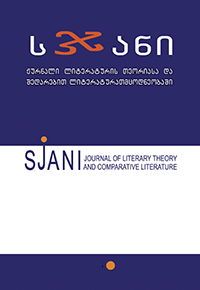აგიოგრაფიის ენა (თეორიული შენიშვნები)
The Language of Hagiography (Theoretical Remarks)
Author(s): Ivane AmirkhanashviliSubject(s): Literary Texts
Published by: ლიტერატურის ინსტიტუტის გამომცემლობა
Keywords: hagiography; ancient rhetoric;
Summary/Abstract: The hagiographic compositions have been written for listening, they were meant for congregation, parish, to be listened to in church. There is something specific, original and peculiar in this function that must be taken into consideration while defining specific artistic features of a genre but it is also a fact that this oral text is written and formed as a written word. The style of the text read aloud, naturally requires the application of such rhetorical means which can make an impression on a listener. Therefore for hagiography it is topical to address the stylistic ideals of the ancient rhetoric: laconism, temperance, feeling of the wholeness, naturalism, harmonic composition of the sentences, selection of thought and utterances, the use of aesthetic, referential, emotive, imperative and metalingustic functions of the language. It is true that there is difference between texts written for oral purposes and those for reading but in both cases the language remains an organizational dominant. The language of hagiography as an aesthetic phenomenon represents the organization of various stimuli the stability of which is provided by the rule of genre. Along with the rules of genre, linguistic style is a strong and dynamic system which is not changed in the course of centuries. Why does the style remain stable? - Because the subject of expression does not change. The author of the hagiographic composition chooses himself those artistic means which are used by him in the construction of the text, but then subordinates to his choice, i.e. word and follows it in where the word leads.
Journal: სჯანი
- Issue Year: 2009
- Issue No: 10
- Page Range: 54-58
- Page Count: 5
- Language: Georgian

